
The Floating Islands of the Uros, is one of the unmissable destinations that you have to visit Lake Titicaca in Puno, as we know Titicaca is the highest navigable lake in the world and has this artificial island, being one of the most visited islands by tourists.
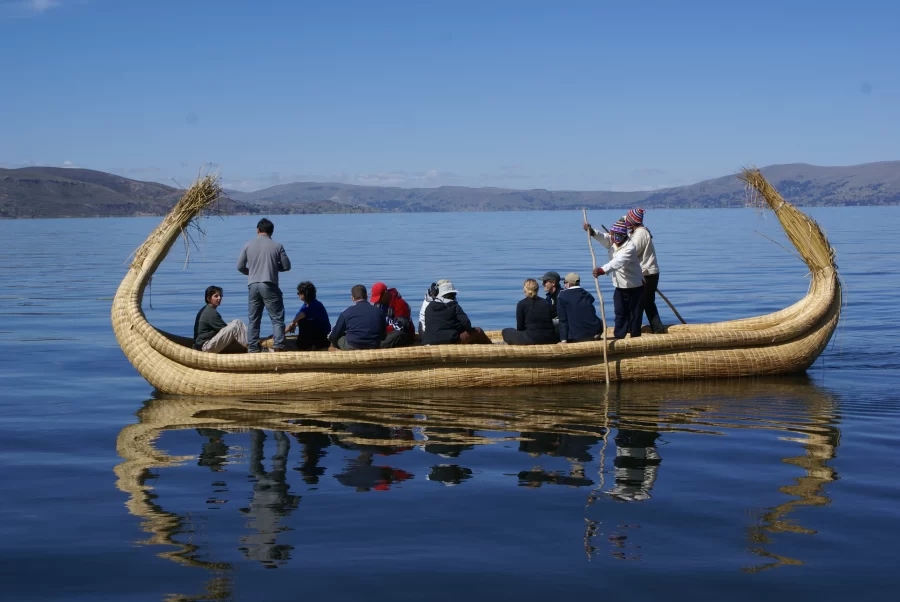
Table of Contents
It is located north of Puno and west of Lake Titicaca, at an altitude of over 3800 meters above sea level.
This Floating Island of the Uros is bordered by these villages:
From Puno: To get to the Uros Island you have to go to the port of Puno, and from there you will travel by boat to the floating island of the Uros; the trip takes about 30 to 40 minutes.
From Capachica: You have to leave from the port of Ccollpa or Korita of the community of Llachón, route that will take you to the Uros Island.
From Juliaca: You have to go to the city of Juliaca and go to the vehicle terminal that will take you to Capachica and from there to the Uros.
From Cusco: You must take a commercial bus in the direction of Puno, which will take approximately 7 hours to arrive, then from there you will have to go to the port of Puno.
In any of these cases, the visit to the island can be done individually, going to the port where you will find boats that will take you to the island for a small fee that includes the entrance to the Uros Island.
You can also hire the complete tour with a tourist agency, either from the city of Cusco or the same Puno, which will offer complete packages not only to visit the floating island of the Uros, in this case will guide you to the Antamani Island, you can do sports and more.
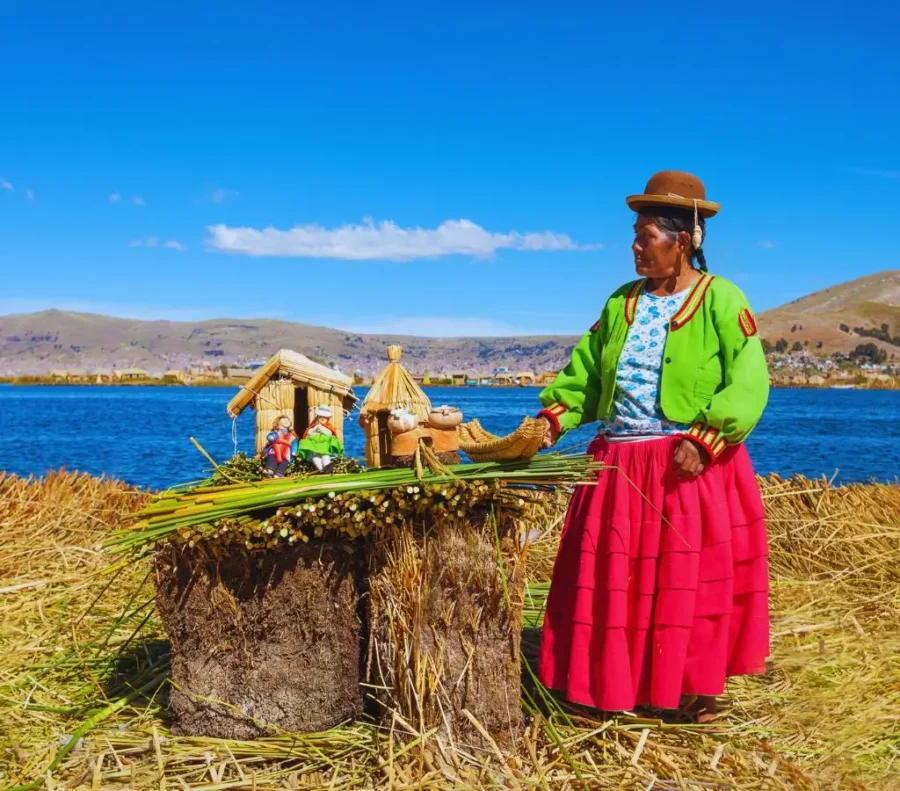
According to several researchers, they identified that the Uros were the oldest inhabitants of the Collao plateau, since the archaeology found in the place evidences its antiquity. The chroniclers Martin de Murua and Baltazar Ramirez make mention of this people and reveal the way they lived, according to the chroniclers indicate that they lived in houses built on reeds that floated on the water.
A fact that we see until today, however, in recent decades, with the tourism sector that began to grow in Puno, little by little began to make visible the lifestyle of the original people of the Uros, on the other hand, their native language was the Uro that was preserved until the 1920s, from there everything was changing.
Currently, the inhabitants of the Uros, are part of the tourist circuit in which they promote their way of life, customs, crafts and make experiential tourism, actively participating with tourists in the so-called "Floating Islands of the Uros".
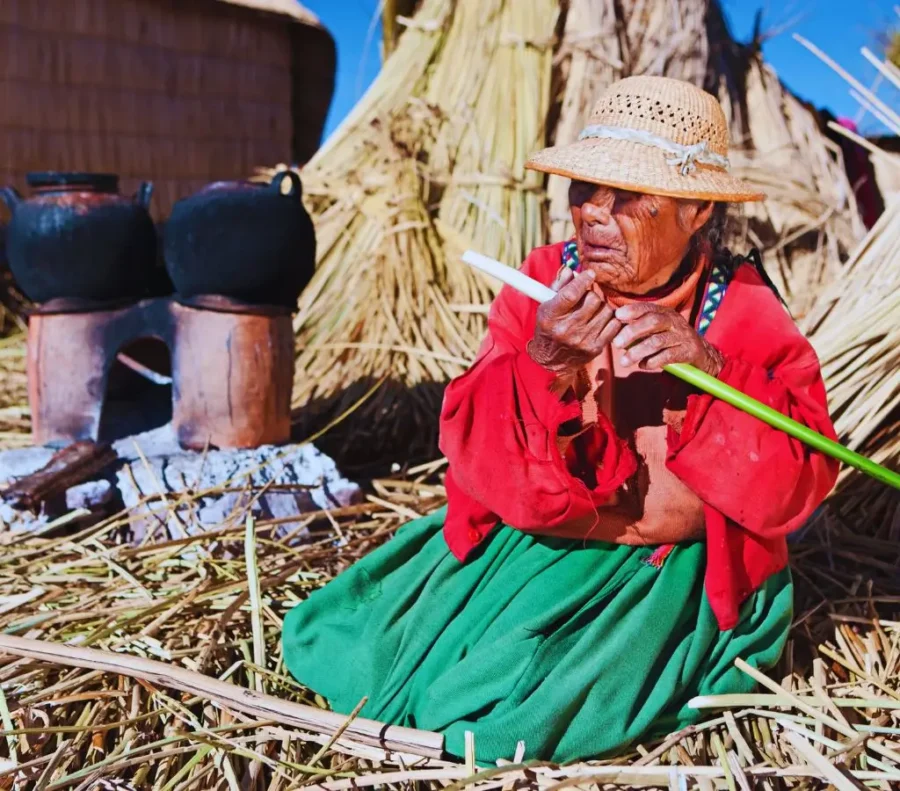
This famous handmade artificial island has become very famous over the years and is a tourist attraction. This technology goes back to the traditional use of totora reeds, since its ancient inhabitants used it, allowing them to continue building houses on the water.
The Totora, a primordial element, has been used not only to make houses, but also for wall coverings, boats, and others. This plant can measure between one and three meters long.
Likewise, the Kilhi (reed root) is approximately 5 to 6 meters long, being very important, because once it is mixed with the base of the soil of the lake forms a natural layer on which the roots are intertwined, entangled and formed as a kind of cork.
These are elementary for the construction of the floating island, the Kilhi can be found once a year, in the summer season, when the water level rises and the root of the cattail breaks and floats naturally.
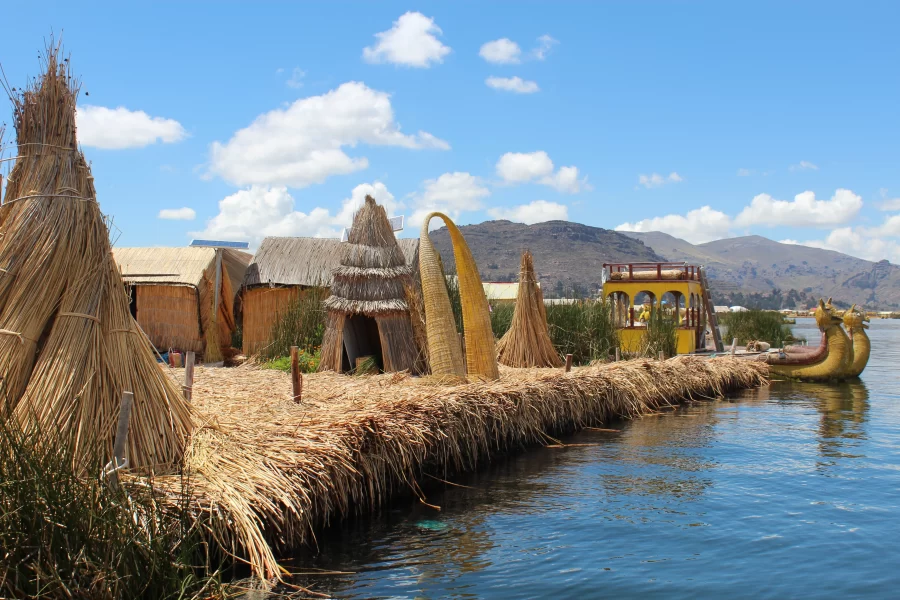
Construction process
For processing they first have to cut the totora, for this they use the instrument called Kiniña (a long stick with a tip in which a sharp knife is tied) to cut, but they never cut the root of the totora, they always leave about 30 cm so that the totora will grow again in about 6 months.
The roots are assembled in blocks of khili to connect them with the help of stakes and ropes to form large blocks, the amount depending on how many families will live in the place. Once the pieces are ready, begins the anchoring of the blocks, there intervene the sticks of about 3 m to which they are tied with straw, reinforced and sunk at the base with stone.
Once the blocks are stable, they throw several layers of dry totora in the form of a cross with a level of 1.3 meters thick to avoid humidity. The totora layer plus the kilhi have to be 1.5 m thick, plus the top layer will be a total of 2.80 meters thick.
The villagers will have to throw plants on the islands every two or three months, because every year they tend to sink about 50 cm to 70 cm, so with this they avoid the destruction of the island.
Already culminated the process, the next step is to build houses of a single room, made of wood and cane fabrics, and the kitchen is outside in order to prevent fires, likewise the bathrooms are located on an island separate from the other islands.
Duration of the dwellings
The life span of the floating island of the Uros can last approximately 5 years, and the dwellings tend to last about 30 or 40 years or so, after that time the Kilhi begins to be destroyed at the same time to rot, this indicates a new construction of the island.
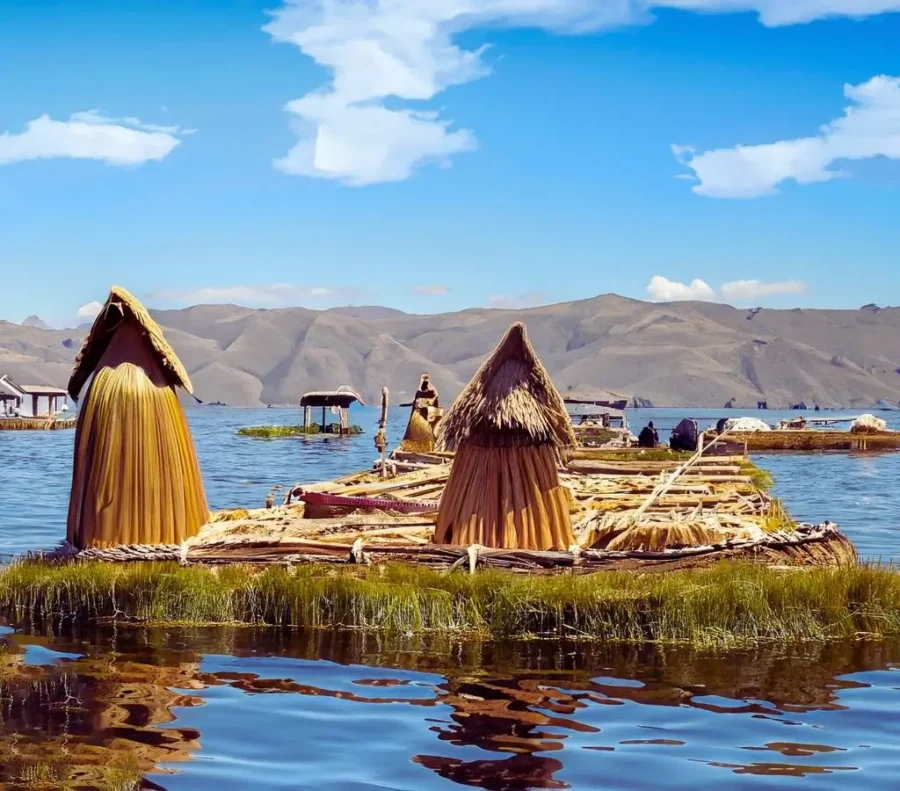
There are several alternatives to do in the Uros Island, you just have to have the disposition to start this excursion.
If you want to do adventure tourism on the island, you must stay in one of the totora reed houses, which are located on the same floating islands of the Uros. They have all the amenities to stay overnight and you can watch the sunset and sunrise of the beautiful Lake Titicaca.